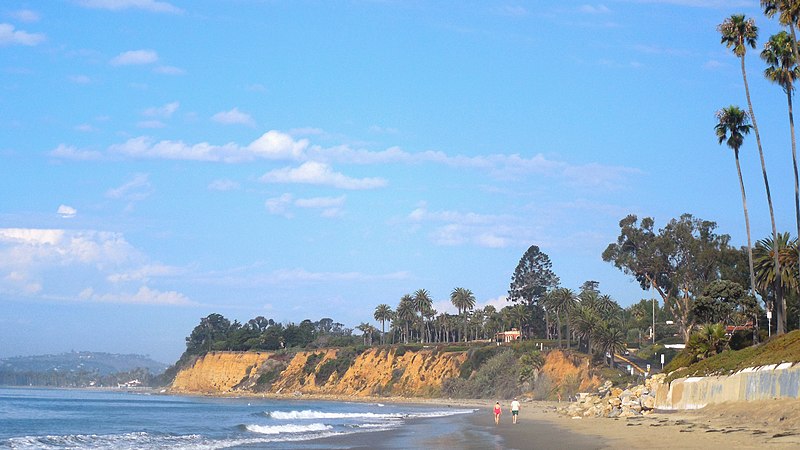The Impact of Growth
Tourism Economy Made a Crisis of Paradise

A recent Voices piece asked if it might be the man in the mirror who helped to create our current affordable housing crisis by buying and upgrading a house which had been an affordable rental. While it may sound like something you say to make yourself feel better, the fact is that if you had not bought your home, someone else would have. Even if it were still on the rental market, it would no longer be affordable. The housing shortage is national, but in Santa Barbara, it was our rapid conversion to a tourist-based economy that has made it a crisis.
When I came to Santa Barbara in the early ’70s, it was a middle-class city of around 75,000, the middle-class incomes supported largely by UC Santa Barbara and the R&D firms in Goleta. Affordable rental housing was plentiful. Contrary to encouraging tourism, the City Council was exploring ways to limit growth. In 1973, they commissioned the “Impacts of Growth” study to examine how various levels of growth would affect our quality of life. The council chose 85,000 as an appropriate population goal. But as the council began downzoning residential areas and trying to find ways to curb commercial growth, something happened that would change everything: Fess Parker proposed a huge luxury hotel for the jungle across from East Beach. The property was legally zoned for commercial/hotel use, and Parker made many concessions — among them, the land to expand Chase Palm Park across Cabrillo Boulevard. The project was approved.
So, the Red Lion Inn (now the Hilton) was built, and the company needed to fill it. The hotel chain started promoting Santa Barbara as a destination vacation spot. Santa Barbara had never been that before; our limited tourism was made up primarily of people passing through on the 101 looking for a place to eat and relax, or visitors looking to see the Mission or enjoy the beach. There was no night life to speak of, and the waterfront was separated from downtown by the freeway. But when the Red Lion started bringing in thousands of tourists looking to enjoy Paradise, businesses responded.
Soon there were new restaurants, bars, and nightclubs. Caltrans completed the freeway underpass, and the spiral began. The city soon became dependent upon the increased sales and bed taxes, and the Chamber of Commerce joined the hotels in promoting Santa Barbara as a place to vacation. More hotels and motels were built to meet the demand. We had become a tourist town seemingly overnight.
The city now depends on tourism, and tourism depends on low-wage workers. The demand for these workers continues to grow. At the same time, as more people were exposed to our Paradise, more wanted to live here. Home prices soared sooner and far faster than the national average. Only the rich can now afford those once middle-class homes. If you own a home in Santa Barbara today, you are a millionaire (your property is worth that). If you don’t, you are probably struggling to make ends meet. There is no more middle — only the rich and what economists call the “service sector.” The once plentiful affordable rentals don’t exist anymore; many bought up by investment companies looking only to maximize profits for their investors by charging higher rents than most tourist-industry workers can afford.
The city’s efforts to deal with the shortage have so far done little, if anything. The ill-conceived AUD (Average Unit-size Density) program has only resulted in a plethora of luxury apartments and condominiums, while turning our streets into parking lots by reducing parking requirements. It has not produced any affordable housing. We have long since passed that population goal of 85,000, and now the state’s ADU (Accessory Dwelling Unit) mandate has effectively ended single-family zoning; second units can be built anywhere. If that weren’t enough, they have now imposed a further mandate to produce even more new units as our “fair share” of the state’s housing needs. They forgot to tell us where.
To provide housing for the workers we need to support our tourist economy in the limited space we have, that housing will not only have to be extremely dense but rent controlled. The moratorium on new hotels will help some, if only by curbing the demand for even more low wage workers for a while, but will not provide any housing. Any new units created by simply requiring housing on those sites will not be affordable. I hope that the Housing Authority can acquire some of that land and build affordable housing, but those units will not make a dent in the shortage. I wish the Housing Crisis Task Force luck.
You cannot blame the man in the mirror for the crisis we find ourselves in; it’s happening all over the country. But it was accelerated and worsened here by the sudden explosion of tourism that no one anticipated or planned for. The floodgates were open the day Santa Barbara was promoted nationally and internationally as a destination vacation spot. They called it Paradise.
You know what happens when you call someplace Paradise.



